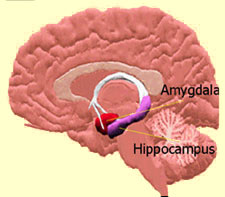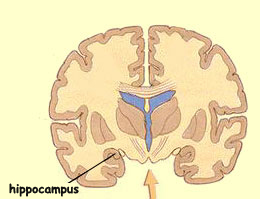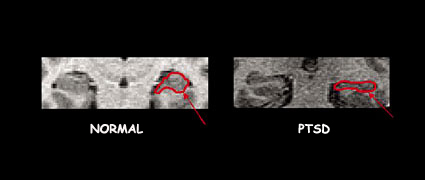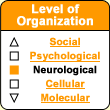|
|

 |
 |
 |

 |
The source of many anxiety disorders is a conditioned fear. We speak of a conditioned fear when an object or situation
that in itself is neutral becomes associated with something that is threatening , thus triggering a fear reaction. The brain structure at the centre of this process is the amygdala.
But this association is not necessarily durable, because there
is another process, called extinction,
that can overcome it. Extinction can occur spontaneously over
time, if the association between the neutral stimulus and the
fear is not reinforced. Or it can be achieved deliberately,
through rational efforts in the cerebral cortex (in the course
of psychotherapy, for example).
Though extinction may thus be a process that the cortex applies
“from the top down” to soothe the fears conditioned
by the amygdala, these fears may in fact never be fully erased
during an individual's lifetime. There is much evidence
supporting this hypothesis, some of it right in the circuits
of the amygdala itself. Moreover, it is thought to
be precisely these circuits that psychotherapy addresses, by
increasing the repertoire of soothing messages that can be sent
down to them from the cortex.

|
|
|
| BRAIN ABNORMALITIES ASSOCIATED WITH ANXIETY DISORDERS |
|
The
various anxiety disorders involve many different areas of the
brain. These areas reflect both the uniqueness of each of these
disorders and the features that they have in common.
The amygdala,
for example, plays a central role in anxiety disorders.
This structure in the limbic
system warns us when a danger is present in our environment
and triggers the fear reaction and then the fight
or flight reaction to get us out of it. |
|
 |
It is therefore no surprise that the
central part of the amygdala seems to play an important role
in anxiety disorders that involve specific fears, such as phobias.
Researchers have also observed that a group of very anxious children
had larger amygdalas, on average, than a group of normal children.

Source: Jacob L. Driesen, Ph.D.
|
|
The hippocampus is another essential limbic structure that specializes in encoding
information. Because all old memories depend on the hippocampus,
it would be suprising if this structure were not involved in
anxiety disorders that are generated by memories of painful
experiences, such as post-traumatic
stress disorder (PTSD).
And in fact, studies do show that people who have suffered
the stress of incest or military combat have a smaller hippocampus.
This atrophy of the hippocampus might explain why such people
experience explicit
memory disturbances, flashbacks, and fragmentary memories
of the traumatic events in question. |

Source: J. Douglas Brenner
Left: Functional magnetic resonance image (MRI) of the hippocampus
of a normal child.
Right: Functional MRI of a child who has suffered sexual abuse;
the volume of the hippocampus is reduced significantly.
In addition to these differences in the size of various brain
structures, abormally
high or low activity in a particular region of the brain, as
revealed by brain imaging, may be another kind of anomaly that
results in anxiety disorders.
|
|







